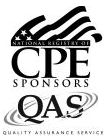Health Care Accounting (CPE Course)
CPE Credit: 12 hours
Course Type: Downloaded PDF materials with online test
Price (with PDF Textbook): $85
Course Description
Health care is one of the largest industries in the world, and involves some of the most complex accounting transactions. Given the financial challenges facing the industry, it is essential for the health care accountant to have a firm grasp of financial accounting. This course discusses the accounting and financial reporting issues related to hospitals, medical group practices, nursing homes, and other health care entities. The course covers the basic system of accounting, financial reporting, and many practical topics for the accountant, including revenue recognition, payroll accounting, fixed asset accounting, debt liabilities, and more.
Author: Steven Bragg
Course Number: AC1112
Table of Contents
Chapter 1. Overview of the Health Care Entity
Chapter 2. The System of Accounting
Chapter 3. Not-for-Profit Accounting and Reporting
Chapter 4. Governmental Accounting and Reporting
Chapter 5. Cash and Receivable Accounting
Chapter 6. Inventory Accounting
Chapter 7. Fixed Asset Accounting
Chapter 8. Asset Retirement and Environmental Remediation Obligations
Chapter 9. Current Liabilities
Chapter 10. Debt Liabilities
Chapter 11. Revenue Recognition
Chapter 12. Payroll Accounting
Chapter 13. Split-Interest Agreements
Chapter 14. Affiliated Organizations
Chapter 15. Special Accounting Topics
Chapter 16. Management Accounting in Health Care
Learning Objectives
Understand why health care is one of the most examined industries in the country.
Cite the financial statements used by each of the different types of health care entities.
Specify the accounting principles that apply to health care entities.
Describe the nature of the accounting cycle.
Specify why the out-of-balance concept harms a system of accounting.
Recognize the source of the trial balance.
Discuss how the extended trial balance is used.
Recognize the characteristics of the accrual basis of accounting.
Identify the formula underlying the balance sheet.
Specify the criteria that define a not-for-profit entity.
Describe the proper accounting for all variations on a pledge.
Recognize the nature of a performance indicator.
Recognize the nature of net assets for a not-for-profit entity.
Recognize the key characteristics of a fund.
Identify the key components of net position in a financial statement.
Describe the uses to which a bank reconciliation can be put.
Cite the elements of a bank statement.
Recognize the various reconciliation problems that may be encountered when preparing a bank reconciliation.
Identify the characteristics of the different methods used to account for bad debts.
Describe the characteristics of the different inventory tracking systems.
Specify the advantages and disadvantages of the different inventory costing methods.
Describe the calculation for the gross profit method.
Recognize the costs to be capitalized for a fixed asset.
Describe the derivation of a fixed asset’s useful life.
Identify the nature of the mid-month convention.
Specify the calculation used to develop an accelerated depreciation method.
Specify the accounting for an idle fixed asset.
Describe the accounting for an asset retirement obligation.
Define accretion expense.
Specify the calculation method used to derive the interest rate inherent in an early payment discount.
Describe the accounting for advance fees.
Cite the different types of standard payment methods required of residents by continuing care retirement communities.
Describe the accounting for the extinguishment of debt.
Describe the different types of bonds and the features that can be incorporated into the terms of a bond.
Recognize the circumstances under which the tax-exempt status of a bond can be lost.
Specify the factors involved in the determination of revenue.
Identify the circumstances under which the expected value method can be used.
Recognize the accounting for naming rights.
Recognize the calculation methods used to determine wages.
Describe how unemployment tax rates are developed for a new employer, and thereafter.
Describe the uses to which the Form W-4 can be put.
Specify how the wage bracket method is used to determine tax withholdings.
Recognize the different methods that are available for setting payroll tax deposits.
Specify the characteristics of a split-interest agreement.
Describe which features of a relationship between entities trigger a consolidation of their financial statements.
Understand the accounting for advertising expenditures.
Specify the proper accounting for a trust fund that is being used to settle malpractice claims.
Recognize the different types of cost allocation methods that can be used in a full costing system.
Level: Overview
Instructional Method: QAS Self-Study
NASBA Category: Accounting
Prerequisites: None
Advance Preparation: None
Latest Review Date: April 2024
Program Registration Requirements: Click on "Purchase Course" near the top of this page to pay for and access the course. You will then be able to download the course as a PDF file, then take an on-line examination, and then download a certificate of completion if you pass the examination.
Program Refund Policy: For more information regarding administrative policies concerning complaints, refunds, and other matters, see our policies page.
AccountingTools, Inc. is registered with the National Association of State Boards of Accountancy (NASBA) as a sponsor of continuing professional education on the National Registry of CPE Sponsors. State boards of accountancy have the final authority on the acceptance of individual courses for CPE credit. Complaints regarding registered sponsors may be submitted to the National Registry of CPE Sponsors through its website: www.nasbaregistry.org.
The NASBA sponsor identification number for Accountingtools, Inc. is 115881.
AccountingTools is an IRS Approved Continuing Education Provider. We are compliant with the requirements for continuing education providers (as described in sections 10.6 and 10.9 of the Department of Treasury’s Circular No. 230 and in other IRS guidance, forms, and instructions). Our IRS Approved Continuing Education Provider number is 72821.


